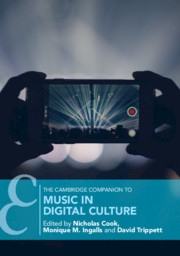The Ancient Greeks understood the need for mystery. At the annual festival at Eleusis, host to one of the longest running dance parties of all time, the mystai partook in ecstatic dance before they were introduced to ‘the mysteries’ inside the Telesterion. These events cannot be known with accuracy 2,000 years later. The mysterious can’t be read in books, seen on film, nor encountered on the edge of the dance floor; but only truly known when the dancer becomes the dance. With the development of electronic dance music cultures, and with the influence of multiple traditions, today we see the evolution of popular routes to the divine. Whether felt as ‘cosmic’, recounted as ‘magic’, or recognised as ‘the shit’, participants around the globe, across all genres, from house to techno, and from dubstep to psytrance, become intimate with mystery.
Mystery defines artists, genres and entire scenes. It is the coin of the realm that lubricates the vibe. In the context of electronic music production and performance, mystery is paradoxical. It is immeasurable, unknowable as that which lies beyond death; yet, in the hands of producer-DJs, it’s couriered with precision: quantised rhythms, digital sequencing, sharp programming, the alchemy of the mix, and the drop of the needle on vinyl, that moment when heaven and earth meet, opening up a sublime fissure in the space-time continuum in which a rhythm-untold animates us in ways unimagined. We’ve all had such moments, haven’t we? Moments when we grow unrecognisable to our selves.
As technicians of ecstasy, DJs are gardeners of mystery, repurposing a vast archive of sound, remixing and remaking music to create the soundscapes of our lives, an inspired rhythmic ambience that moves us within that primal real-estate between the speaker stacks. Annihilated under a rhythmic fury, or gliding upon a soaring build, as techno-neophytes and electro-savants, we are transported into altered states of consciousness enabling a re-evaluation of our life and relationships, a renewed commitment to our loves.
Among the practices employed by DJs is what I have identified as remixticism, or the practice by which producers of electronic music and visual arts evoke non-ordinary states of consciousness augmented by digital audio/video detritus sampled and repurposed from disparate un/popular cultural resources (St John Reference John, Lyden and Mazur2015a). In repurposing source materials, DJ/producers are medianauts cobbling together story-lines of dream travel, soul flight and cosmic transit using materials ripped from the worldwide datasphere.
While it is standard procedure in programming and DJ/VJ techniques that artists recycle existing recordings to compose new works, as digital alchemists they ransack films, TV documentaries, game software, radio shows, podcasts and other sources of nanomedia for choice material (St John Reference John2013a). In multiple electronic dance music genres, scripted syntax from science fiction cinema, sound bites from political speeches, counsel from religious figures, the routines of comedians, and the extemporisations of altered statesmen are sampled in koan-like epigrams, repeated like chorus lines, reassembled as audio-bombs detonating at the breakdown. Dicing and splicing media content to evoke the sensation of altered time-space, electronic musicians offer repeated commentary on themes linked by their association with altered states of consciousness: shamanism, astral travelling, out-of-body experiences, near-death experiences, alien abductions, hypnosis, dreaming, chemically enhanced hallucinations. Via electrosonic techniques, this repurposed media ecology provides the sonic decor to the sonic experience – decaling the soundscape, and augmenting the vibe on dance floors planetwide (St John Reference John2012).
The roots of this media shamanism can be found in an esoteric cut-up heritage including Dadaists, Surrealists, Burroughsians and Discordians alike. It is steeped in Jamaican dub, hip-hop, breakbeat science, house, techno, and chill DJs who’ve broken down, re-versioned and synthesised existing works to birth new forms. This refinement is notable in techno-shamanic traditions and is overt in psychedelic electronica, where media content is intentionally strip-mined and reprogrammed to spiritual endeavours – to augment, parrot and burlesque spirit. This milieu is drenched in an unmistakable penchant for shamanism, a sensibility that reveals dedication to vision and gnosis over the healing and catharsis of traditional curanderos, commitments that place this development in the vanguard of contemporary Western esoteric religion (St John Reference John, Partridge and Moberg2017). Newly promulgated through popular culture, or as Christopher Partridge (Reference Partridge2004) might have it, ‘popular occulture’, sonic murals of alien gurus, ancient astronauts, superheroes, spirit familiars, DMT entities and other in-between figures communicate a desire for being liminal, a transitional experience marking passage beyond the ordinary (St John Reference John2013b, Reference John2015b).
From the original dub and disco studio technicians to today’s home producer, DJs are sonic alchemists, digital shamans, technicians of liminality, seekers who traverse and channel hidden dancescapes. And so, like poet troubadours, DJs bring the sounds and the magic into our lives. But they must remain open to the magic; yes, to broker new beats, but to also revisit patterns of original inspiration, adapting an artifice to optimise the conditions under which we make contact with the divine.

